Blog 16
Days: 77-79
Dates: 27th – 29th August
Cunyu Station to Kumarina
Distance: 222km
Total Distance 2023: 5238km
Day 77 (Day 1 on the Rabbit Proof Fence)
88km
It was great to have a bed for the night at Cunyu Station, a pastoral lease of around one million acres with a carrying capacity of 2800 cattle. That didn’t seem many to me, but the government stipulates how many grown cattle a property can sustainably carry without damaging the environment.
Between Peter Gum, the owner, and Joy and Tom, (who are seasoned volunteers helping with the day to day running of the station during the hectic mustering time), we received our instructions to travel west across the property to the Rabbit Proof Fence, which forms part of Cunyu’s boundary with Ned’s Creek Station.
I set off in a westerly direction along the Bridle Face Road, passing Shearing Shed Well and Yards after 23km. The only complaint I have with a tail wind is that the flies are much more annoying as they crawl over my face, wriggle in my ears, nestle under my sunglasses, and fly into my mouth and nose as I try to breath. It was ten times worse when I had to stop, as I did at Shearing Shed Well, because I was immediately enshrouded by a cloud of maddening bush flies.
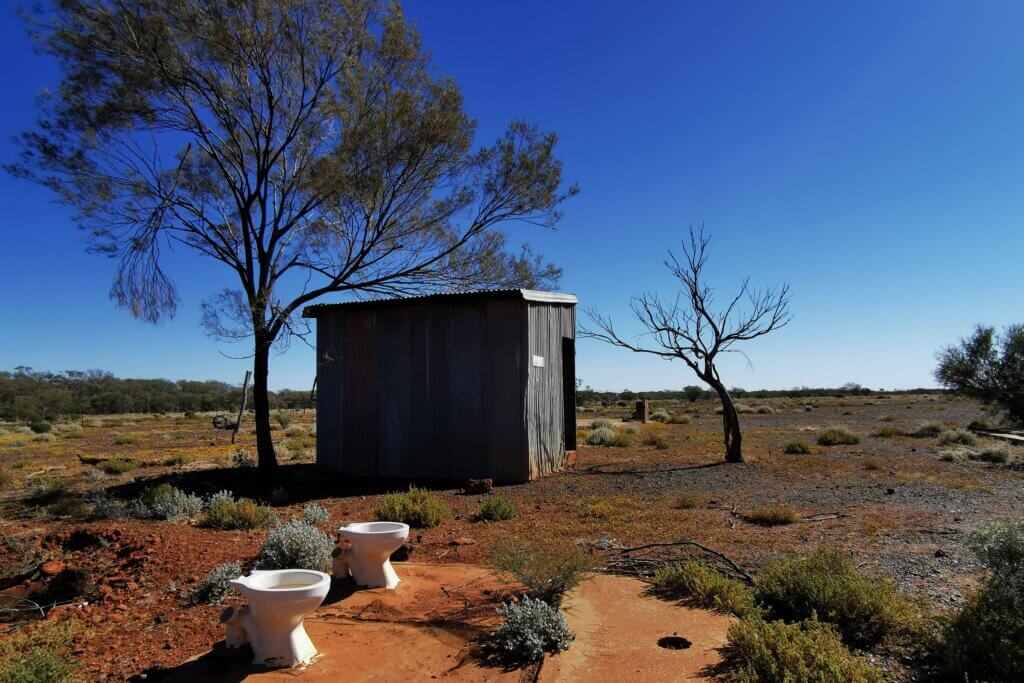
Turning off towards Ned’s Creek Station on Davies Bore Track, the wild flowers were magnificent, especially on this lesser track.
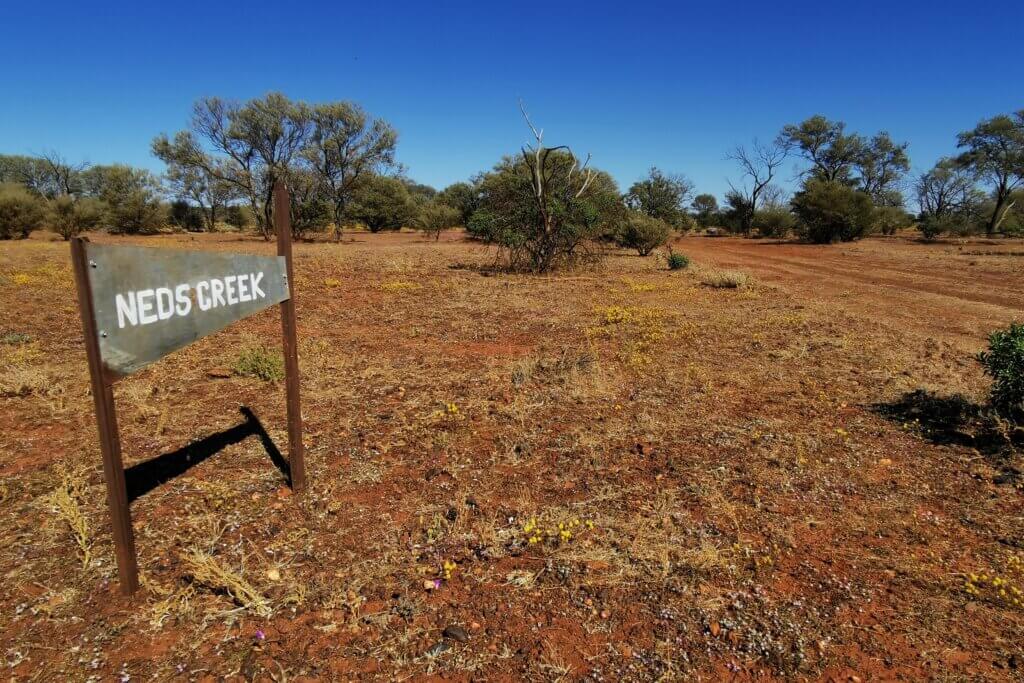
After 11km following the Davies Bore Track I reached the boundary both of the Wiluna Shire and between Cunyu and Ned’s Creek Station – The Rabbit Proof Fence.
The Rabbit Proof Fences were built over a six year period between 1901 and 1907 to keep a plague of rabbits and other agricultural pests that were advancing from the eastern states out of Western Australia’s pastoral land. There were three fences in Western Australia; the original No.1 fence that crosses the state from near Ravensthorpe in the south to Pardoo Station (just east of Port Hedland) on the Pilbara coast. Fence No.2 is smaller and further west and Fence No.3 is much smaller running from Kalbarri on the west coast to east. When the Fence No.1 was completed, it was the longest unbroken fence in the world (1833km). The three fences total 3256km.
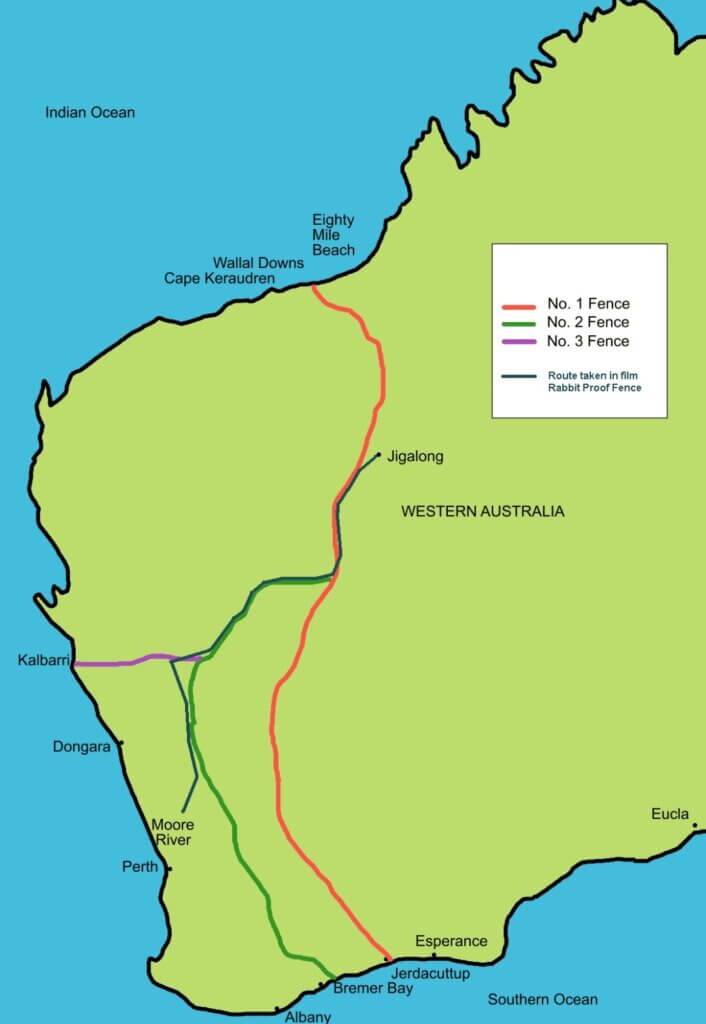
Rabbits were introduced to Australia with the First Fleet but became a problem when settler Thomas Austin released 24 rabbits into the wild in 1859 believing a few rabbits would do no harm and give the region a “touch of home”, and be fun for a spot of hunting. The environment was ideal for rabbits which had virtually no natural predators and they quickly became out of control and multiplied into plague proportions. Fearing that the Western Australian pastoralists would be devastated by the advancing rabbit plague that had already eaten its way through the eastern states, the WA government commissioned the construction of the fences.
The fences were maintained by inspectors – four inspectors would be responsible for an 800km section and 25 boundary riders who regularly patrolled 160km sections, initially by riding bicycles along the fence, then by riding camels, or camels hauling buggies. In 1910, a car was trialled but was subject to constant punctures and rendered useless in these conditions (as were bicycles). There were service depots located along the fence, one of them being Jigalong.
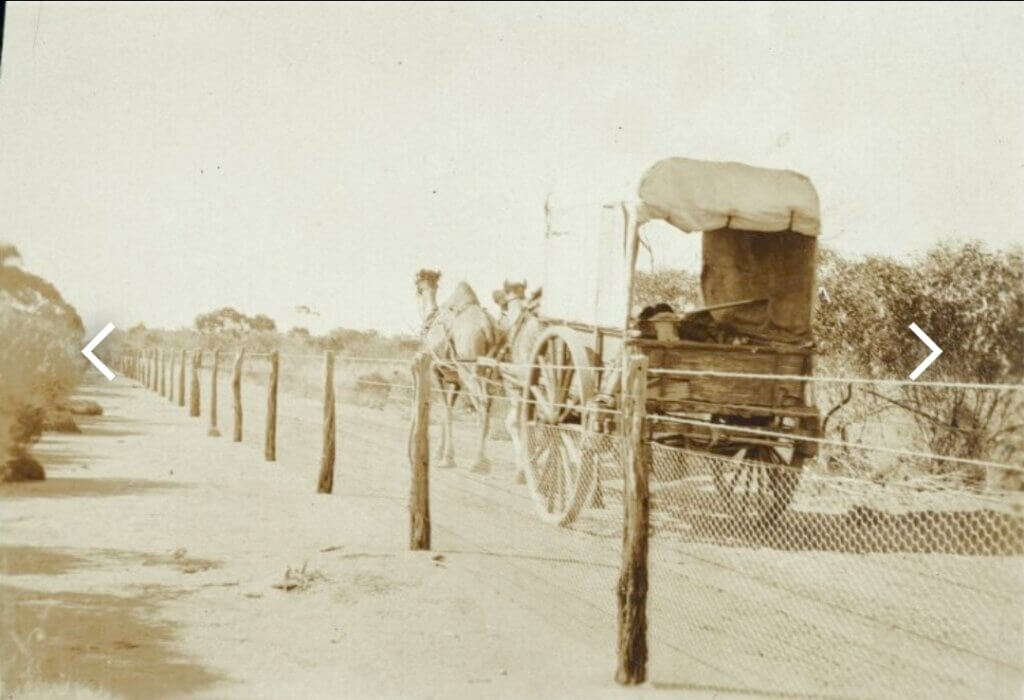
The Rabbit Proof Fence was never very effective. By 1902, rabbits had breached Fence No.1 before its construction was completed. Fence No.2 did largely keep rabbits out of farmland, but it too was breached and the only way that rabbits were eventually controlled was when the cruel myxomatosis disease was introduced – it caused blindness in rabbits and they died due to lack of food and water.
I grew up in the WA country and was aware of the RPF as a child, however much of the world got to learn about the RPF after the 2002 internationally acclaimed film, The Rabbit Proof Fence – the story of three Aboriginal children who were stolen from their parents by the authorities and taken to Moore River Native Settlement, escaped and found their way back home to Jigalong by following the RPF (see map above for the girls’ route in black, from Moore River to Jigalong). The film was very successful in raising awareness about the Stolen Generation and the Rabbit Proof Fence to most people is representative of the plight of the Stolen Generation.
Having been aware of the RPF since I was a child, and aware of the story of the three girls walking the RPF, my plan was to cycle beside a section of the RPF, knowing that it has mostly fallen into disrepair, and follow the story through to Jigalong. This was not going to be simple like it would have been for the early Rabbit Proof Fence cyclists because in the main there are no tracks, or at least nothing has been maintained for more than 70 years. In 2016 and 2017 there were two walking expeditions, but you will soon see why no one has cycled any of it in modern times.
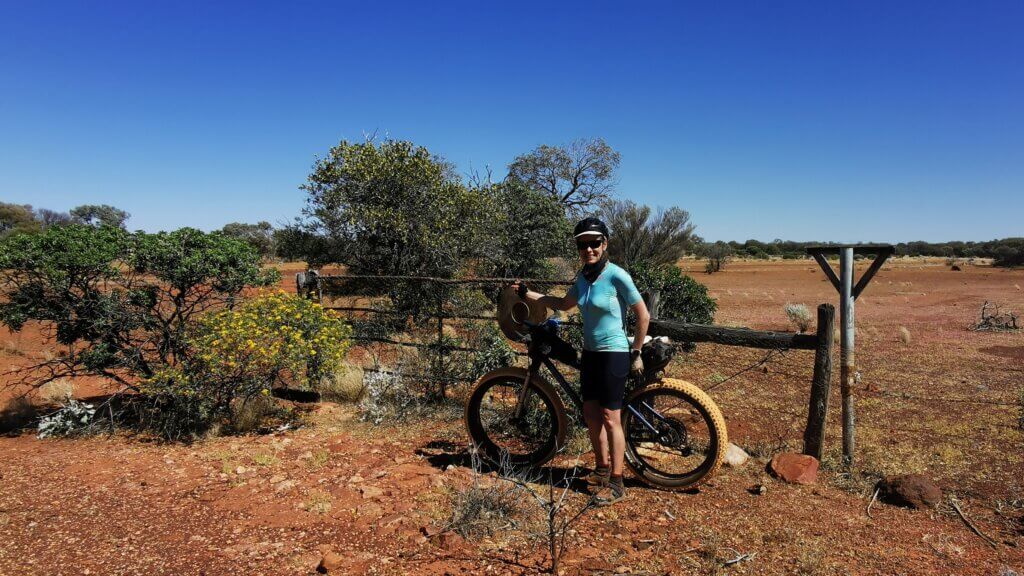
I set off along the east side of the fence – the fence initially was in good shape because it was still in use as the boundary fence between Cunyu and Ned’s Creek. The rabbit netting is buried about 15cm to deter rabbits from burrowing under the fence. I passed through bush decorated by beautiful colourful displays of wildflowers. The old maintenance track here was faint and very hard to see. After 18km, the support team could go no further. The next section, through Nabberu Lakes and up to Simpson’s Well, I had to do alone. On advice from both station managers, the Nabberu Lakes were likely to be dangerously soft for vehicles and the track was non-existent.
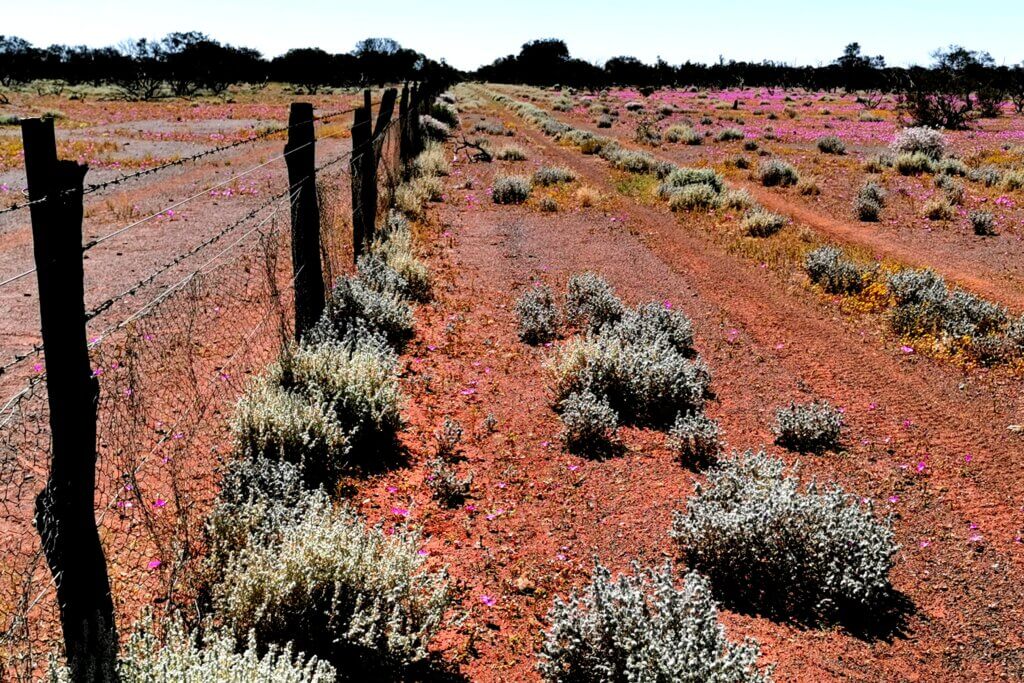
After a quick lunch, we parted – the team had to drive 143km around the lakes, through Ned’s Creek Station and then navigate to Simpson’s Well. I had roughly 35km to do in four hours to reach Simpson’s Well before dark. In normal circumstances, this should have been a breeze, but there was no guarantee as for the condition of the route – no one has been through for quite a few years, and definitely no one has cycled it more about a 120 years! As I set off it felt like I was about to venture around the dark side of the moon!
Immediately, I had to cross one salty claypan after another, with sand ridges in between. The route was completely overgrown with clumps of saltbush. The old path beside the fence was sandy and pocked with animal tracks. Animals tend to move up and down the fence line. I often found myself pedalling through high grass that masked the sandy, uneven surface. I was basically cycling rough-shod, just trying to keep the pedals turning in a low gear, and taking all the bumps like body-blows. It was a serious workout for the upper body and it took my full concentration just to pick a path – often these were animal tracks – to get through.
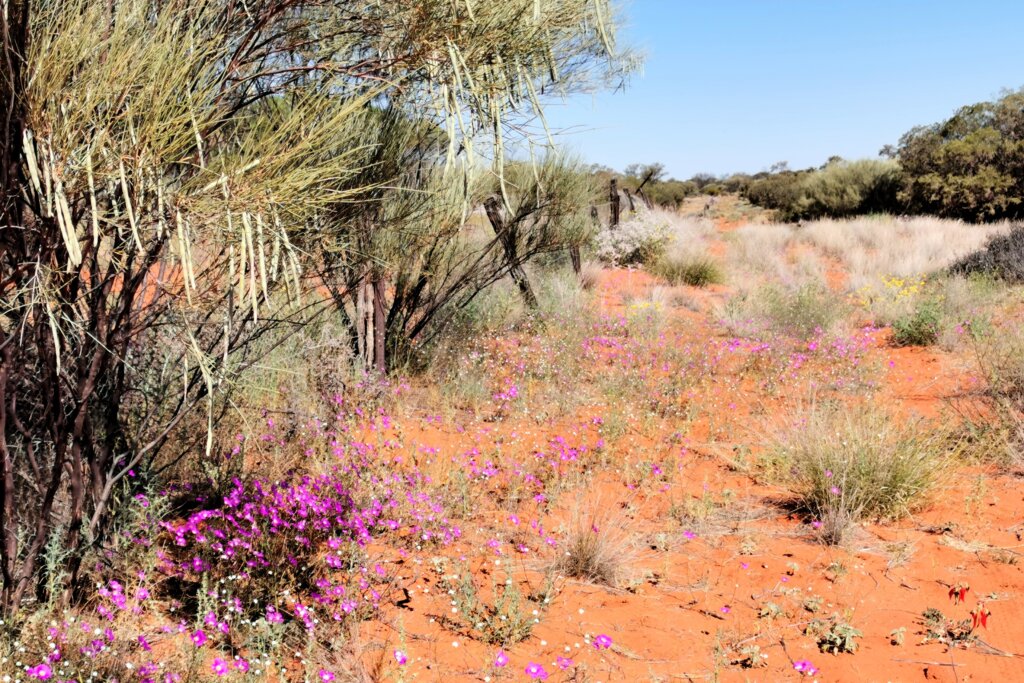
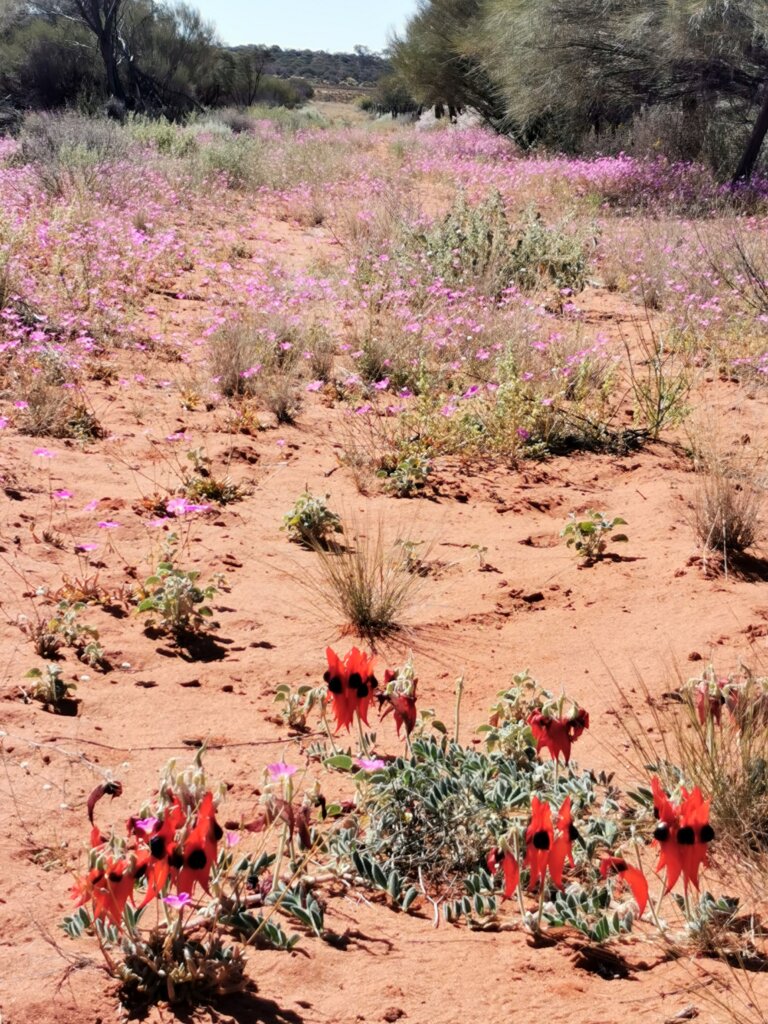
After a few kilometres, the old rabbit netting and wooden posts were replaced by an electric fence, obviously to keep larger animals (not rabbits) out. Sometimes the opposite side to the one I was on looked like a clearer path and I found a spot where I could crawl dragging the bike under the electric fence (very carefully).
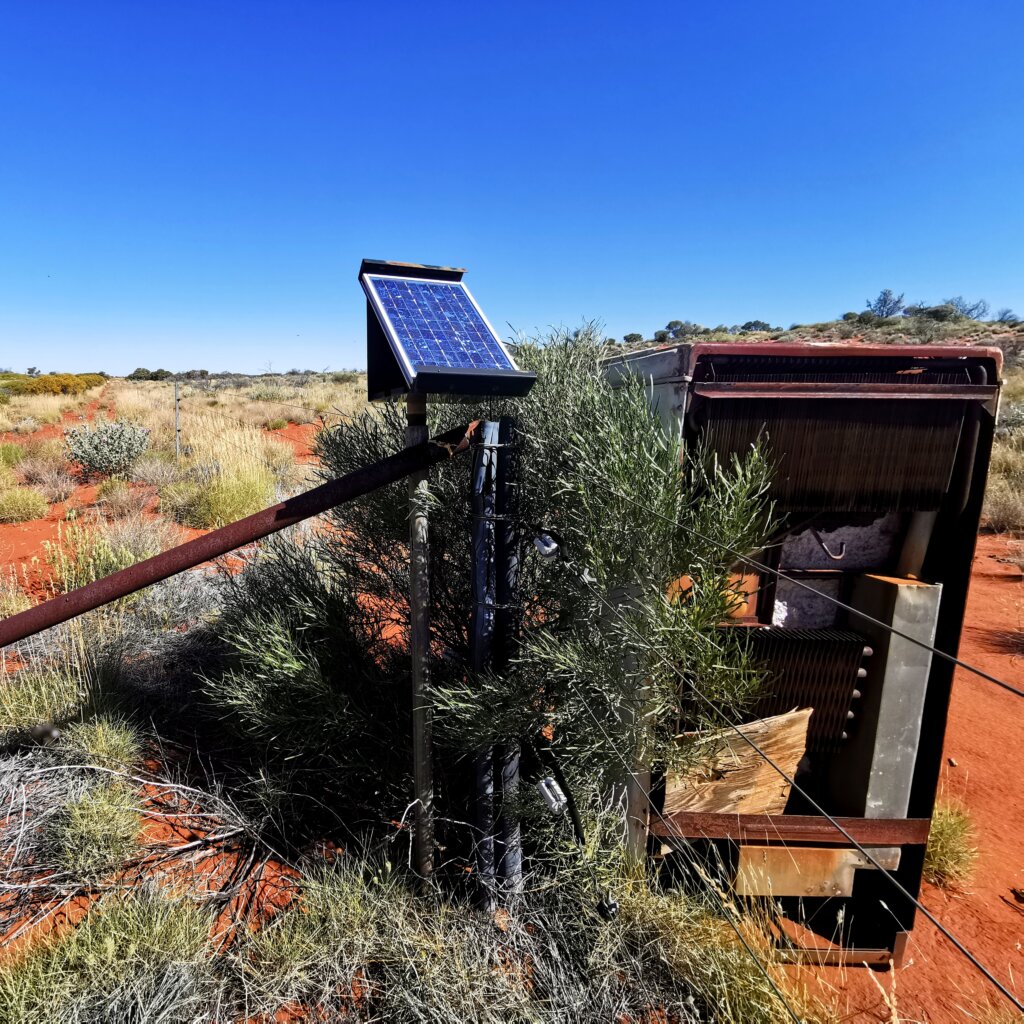
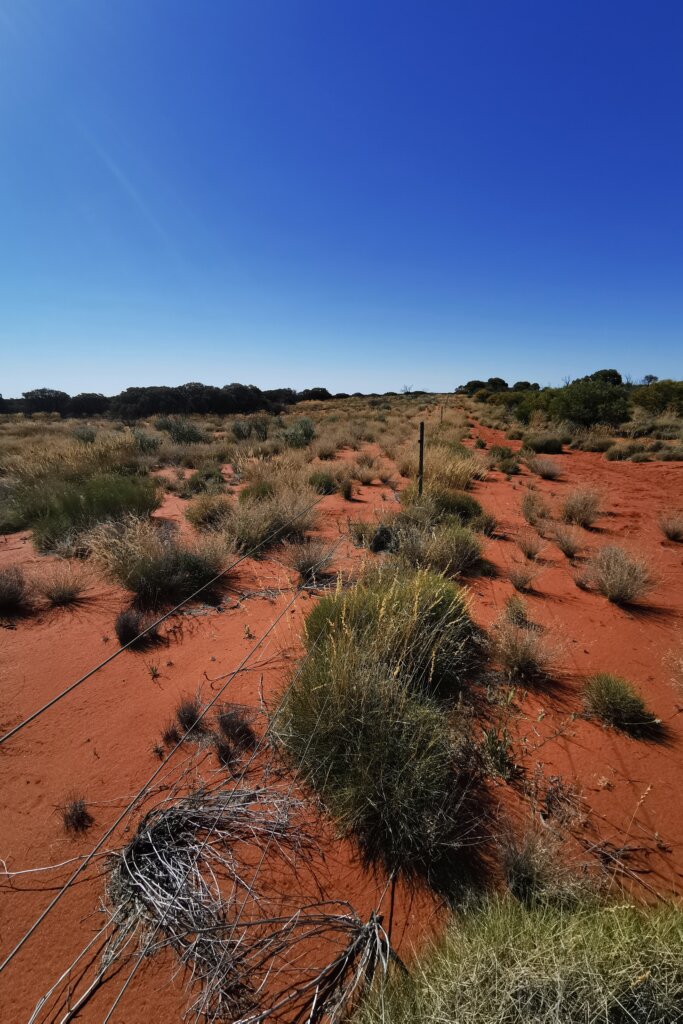
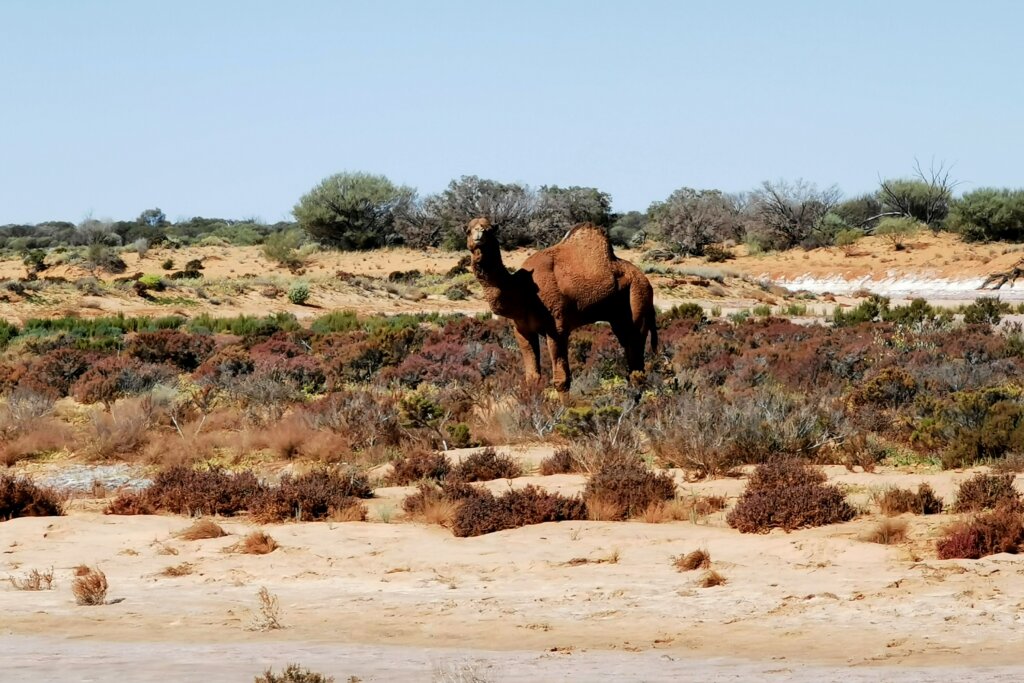
After about 11km, I came across my first serious obstacle, a large lake with deep water! The fence just continued straight through – the lakes aren’t always flooded, in fact mostly they are dry ephemeral lakes.
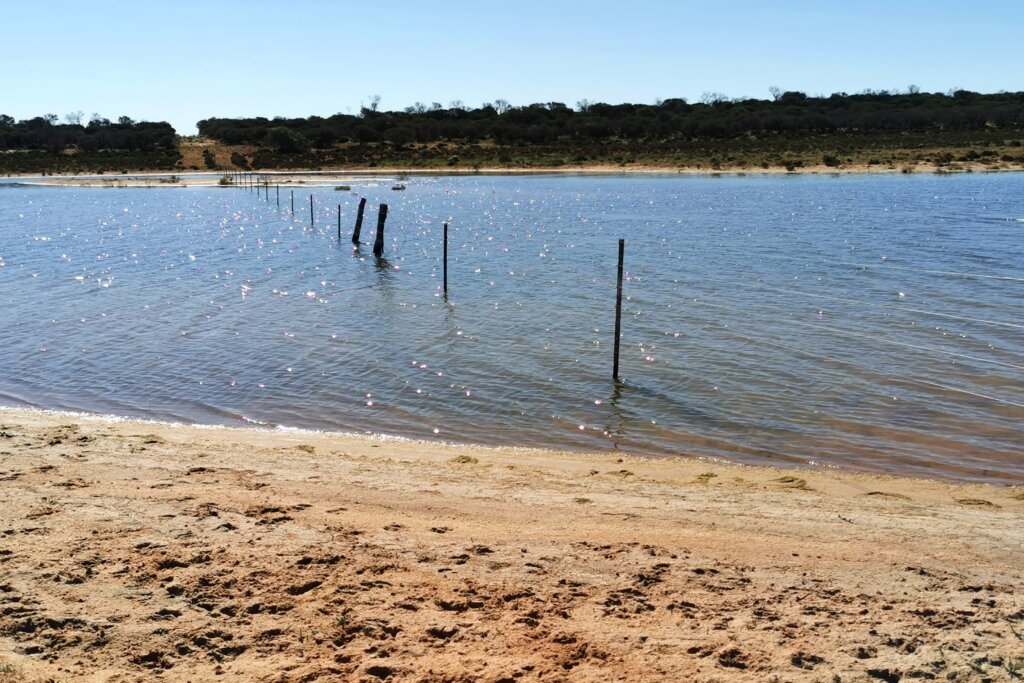
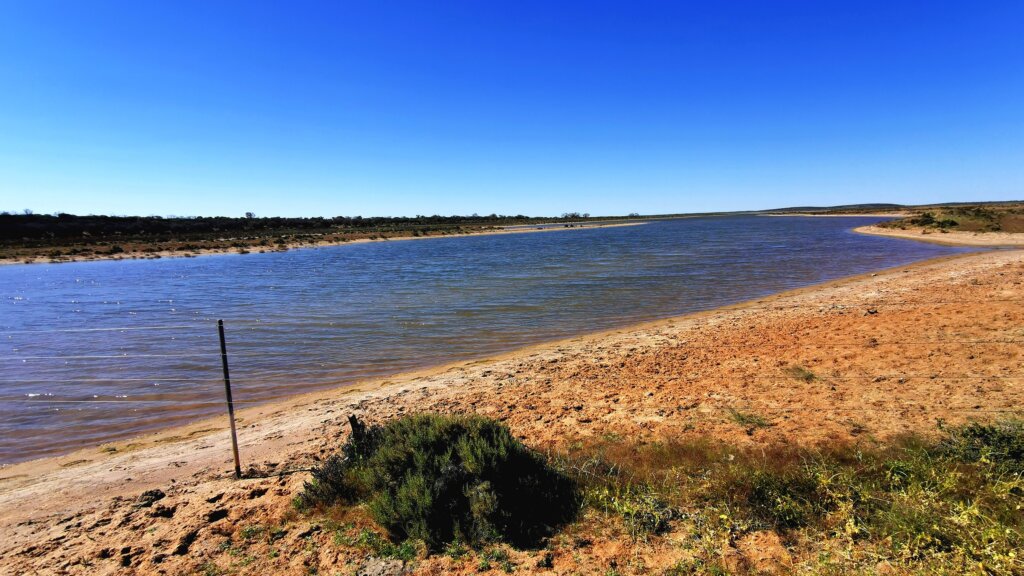
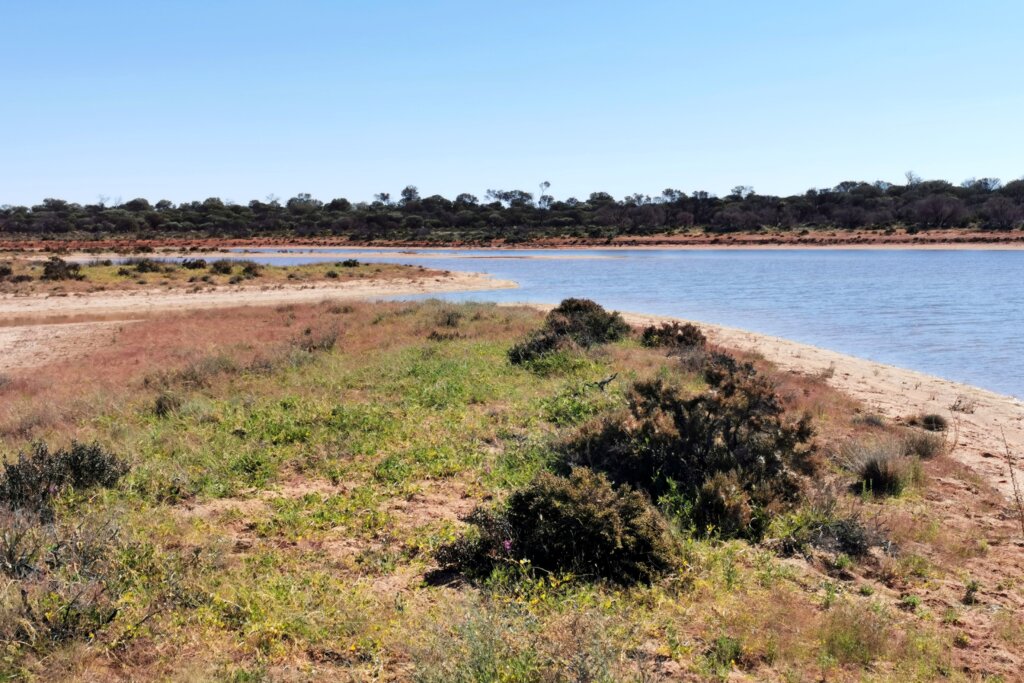
had to find a way through. The east was too wet, but the west side looked a possibility. There was a maze of different leads of water – I followed some sandy beaches and around the bays and realised I was going to have to cross somewhere. I picked my spot, took my shoes off and carried my bike through. One section towards the end of the crossing was exceptionally soft with sediment and I nearly slipped in. The water was up to my hips and I just managed to keep most of the bike out of the salt water. I followed a few more boggy beaches and navigated back to the fence. I had probably cycled and extra 2km and used up precious time. I started to worry what other obstacles were ahead of me.
It was for good reason – there was another lake in my path. This time I managed to work my way through the puzzle without another dip in the lake, but it was a close call as there were several sections that were boggy, slippery mud.
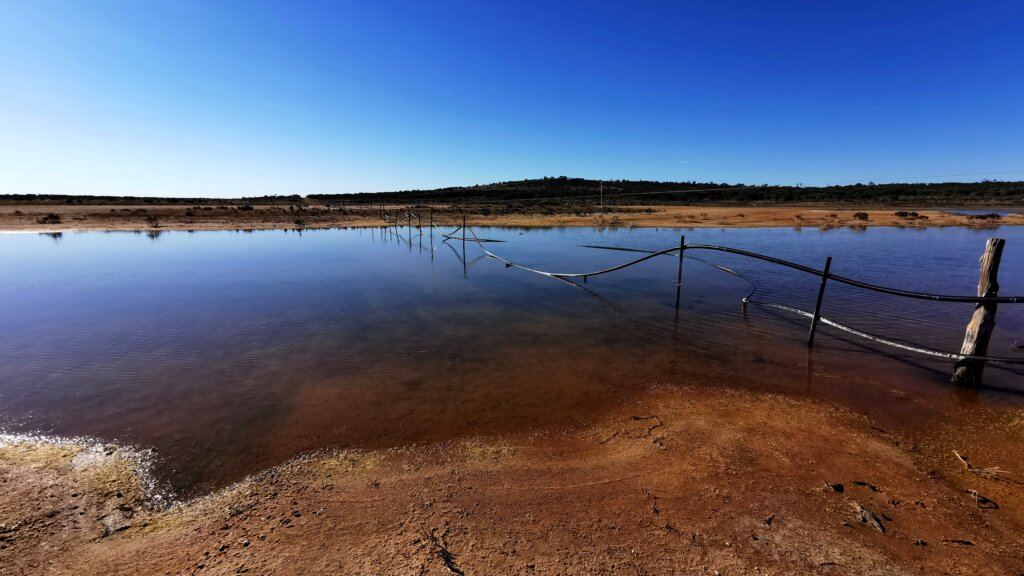
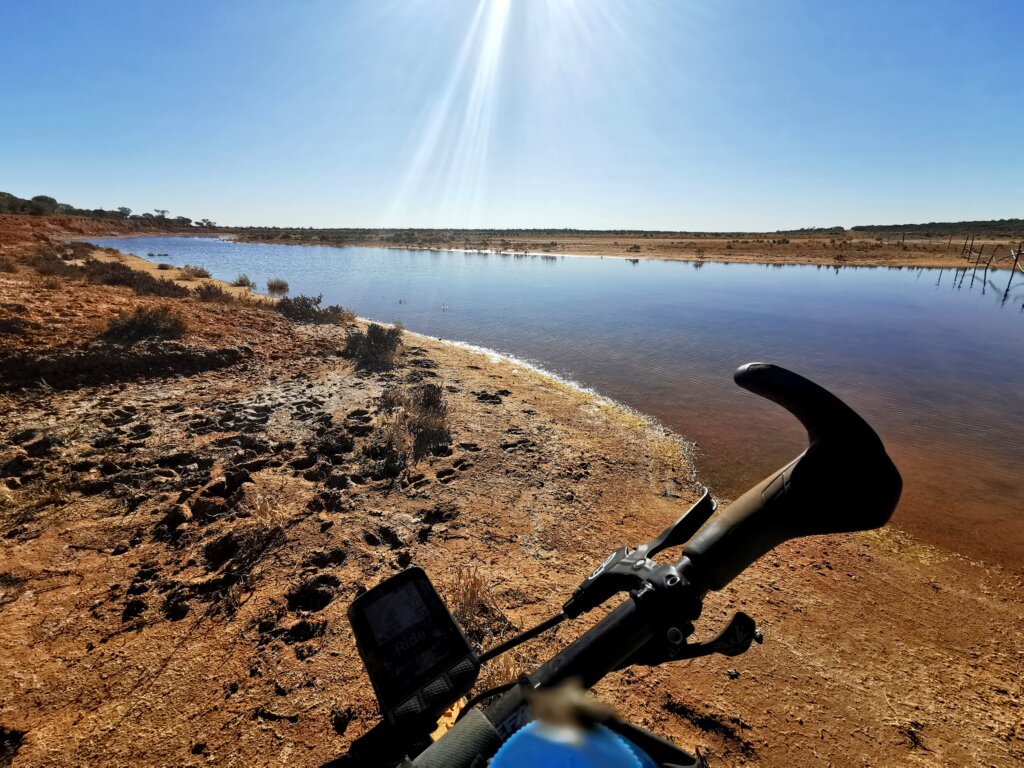
A little further along the fence, I picked up a recent set of tracks from a station vehicle, no more than two weeks old. It gave me confidence that there would be nothing ahead of me that a vehicle couldn’t get through, no more water obstacles.
At 20km into my challenge, the electric fence did a right angle turn which was confusing because the RPF was meant to be a straight line. There was a better track ahead of me, but no fence visible. I managed to reach Martin via the satellite phone and we decided it was best to take the track. I kilometre or so later, the ruins of the original fence appeared and the odd fence post and fragments of netting, with barbed wire occasionally strewn across the road. I made the right decision.
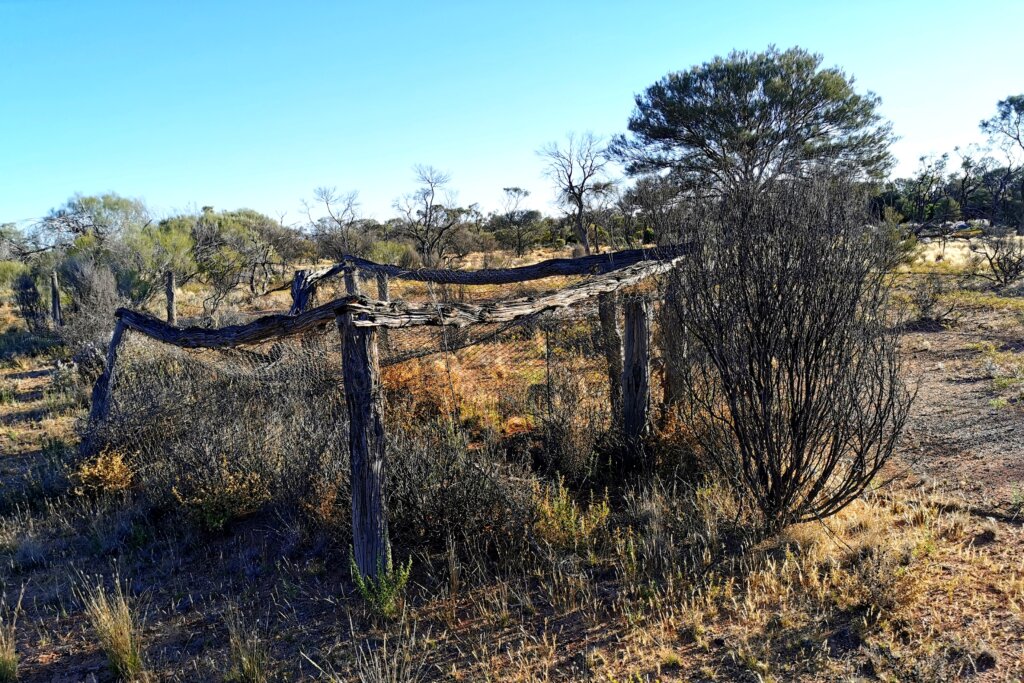
I finally came to the first bore, but then the fence was hard to find again. Once I picked it up again, I daren’t stray too far from the fence. Everything was overgrown – it was hard to find anything that resembled a track. If I followed a track away from the fence, I would lose sight of the fence – often just the odd post or piece of wire. I negotiated massive wash aways, grasses taller than my bike, trees blocking my path, stoney hills – and I was running out of daylight.
Finally I made it to Simpson’s Well and was relieved to see the team. I was pretty tired but it was a great adventure! My tyres looked more like a hedgehog with probably a hundred thorns embedded, and there was grass wrapped around the drive train. My gears were blocked and no longer shifting properly.
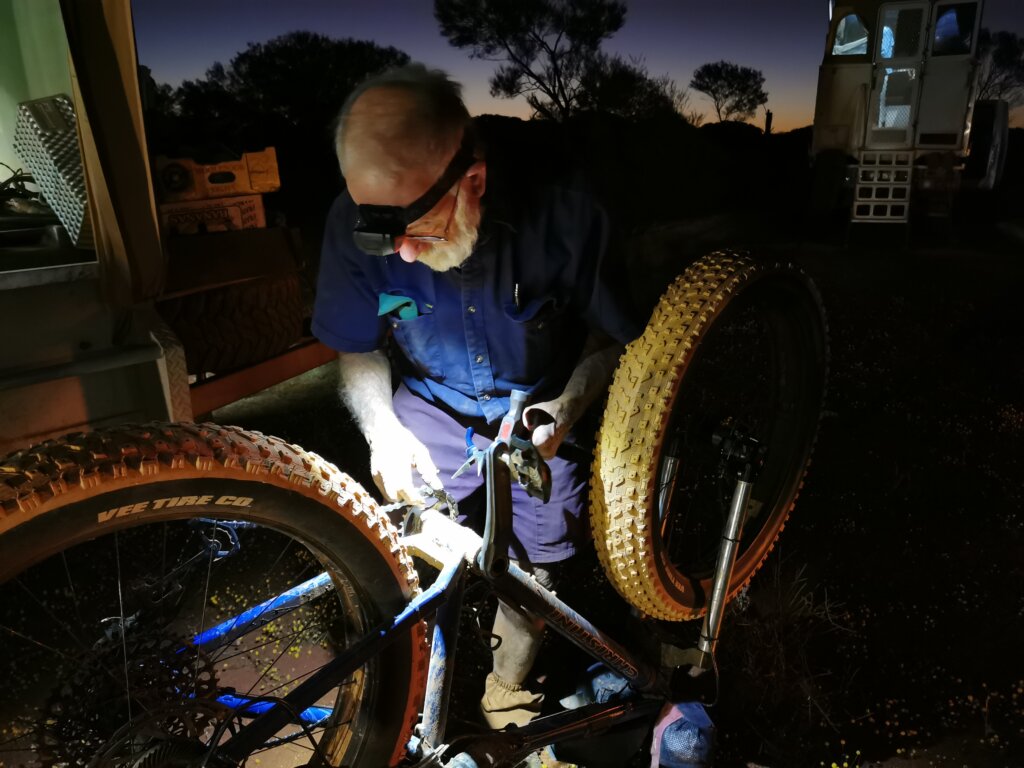
Day 78 (Day 2 RPF)
63km
There was a rough track for the 4km out from Simpson’s Well which was easy to navigate, but after that, the fence kept disappearing. After a few more kilometres I decided to wait for the team as I was losing a lot of time just trying to find the fence and thought it better if we travelled together.
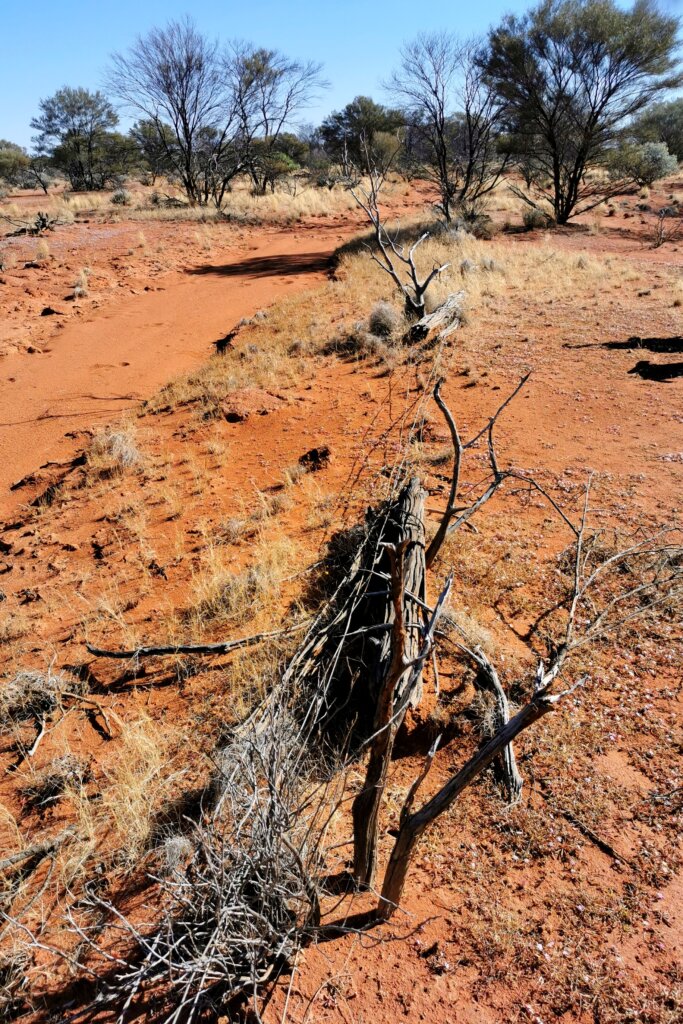
The route was incredibly rough and I could progress at least as fast as the vehicles much of the time. In their vehicles, the drivers were much higher than me and could more easily see the where the track should be above the grasses. I had to make my way over and through the grass, swapping from one wheel mark to the other constantly – over sand, through wash aways and creeks.
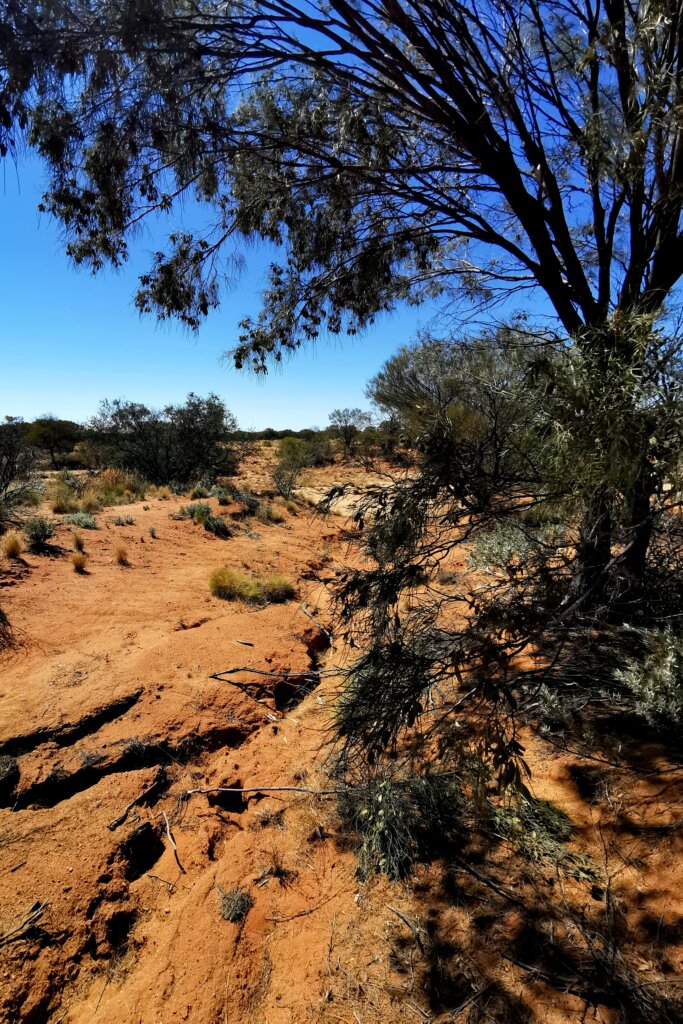
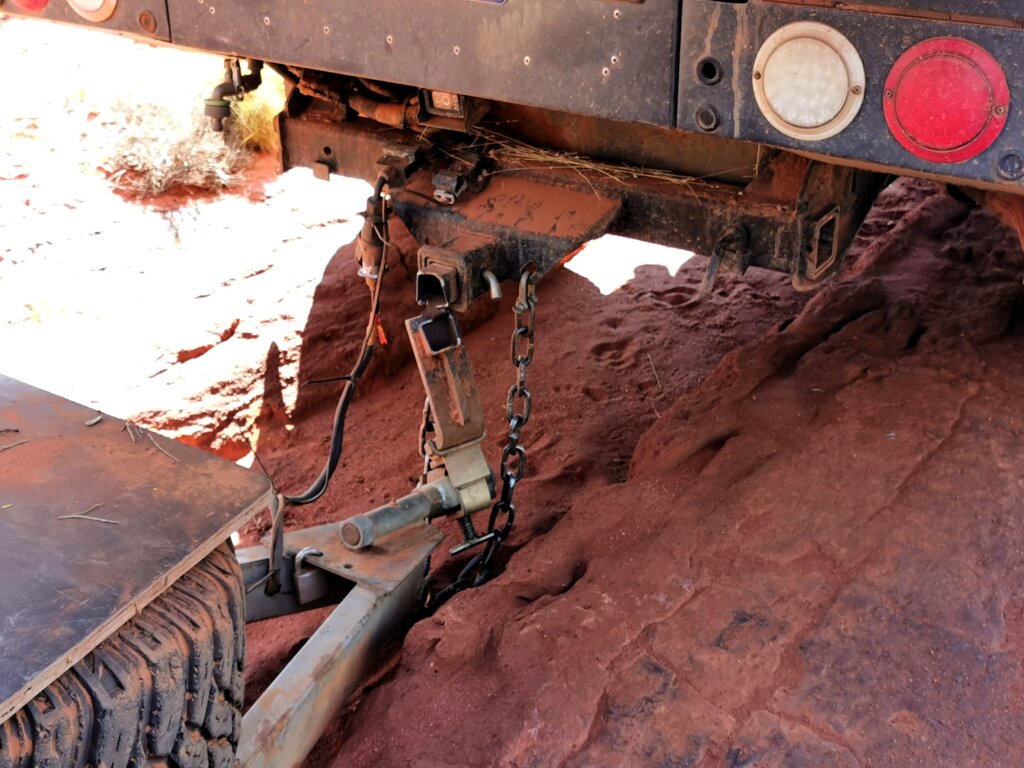
We crossed into Marymia Station – Jack, the manager had been very helpful when I called to ask for his permission. The RPF adventure was starting to take its toll on the vehicles,. The most serious issue occurred when the trailer hitch snapped off. Fortunately Neil had a spare on his vehicle and the incredibly skilled team fixed the problem in good time.
Day 79, (Day 3 on the RPF)
71km
Given the pressure of time and the toll the RPF route was having on the vehicles, I decided to turn away from the RPF at Beyondie, then cycle to Jigalong via the Jigalong Mission Road. My support team had supported two women walking the RPF in 2017 – they travelled further along it but had to pull out due to the fire danger of moving through two metre high spinifex grass. It took them three days longer to get back to Beyondie.
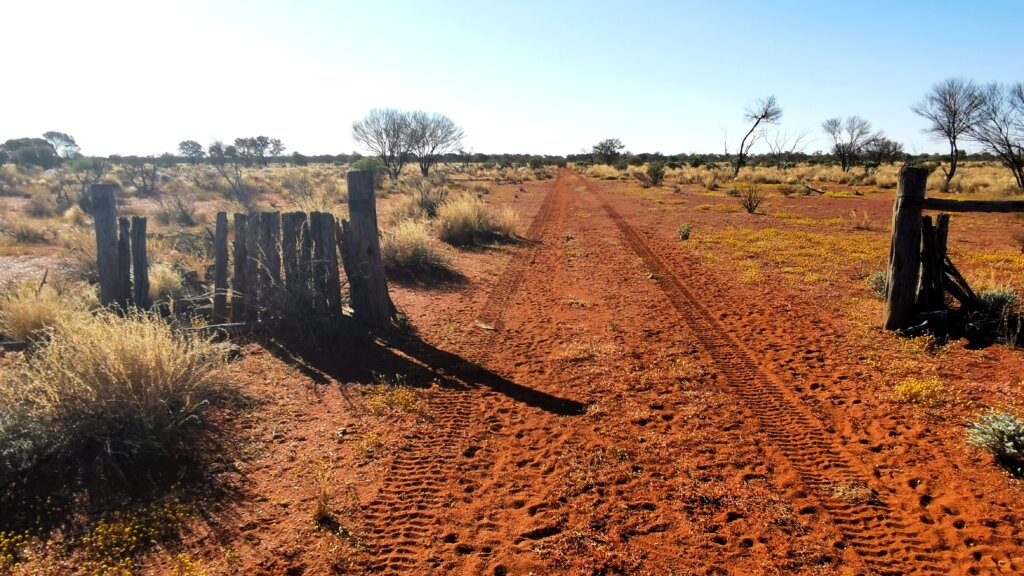
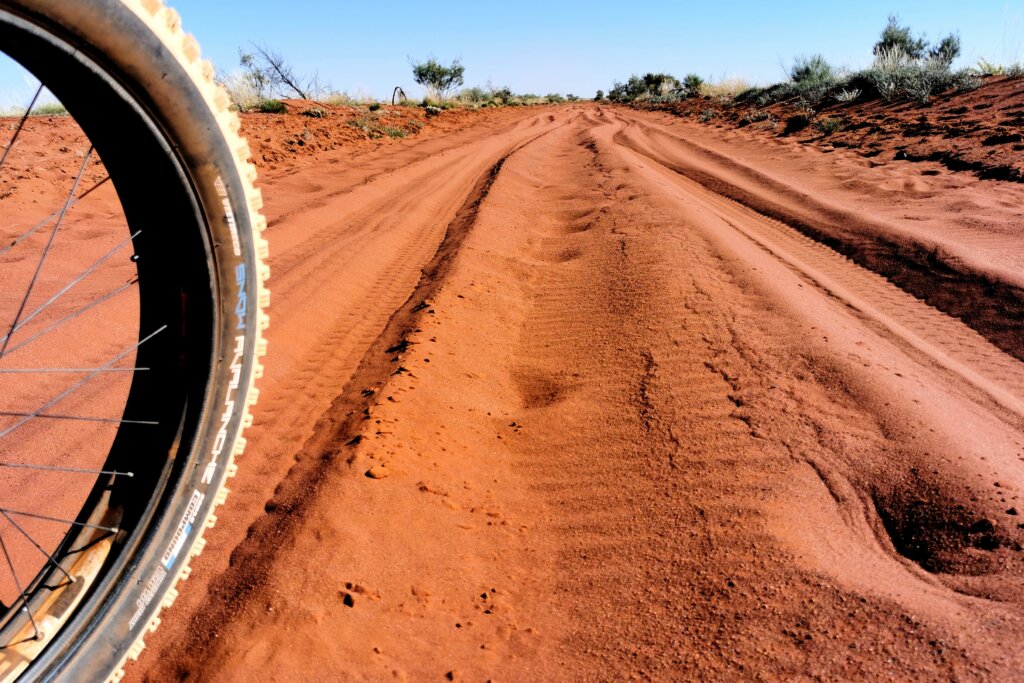
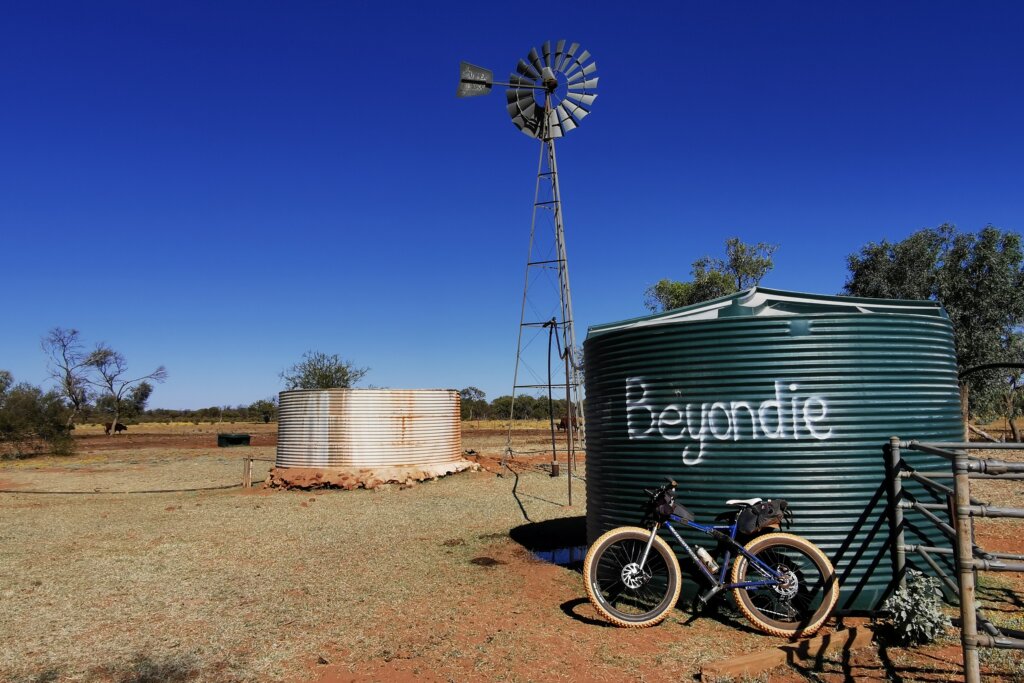
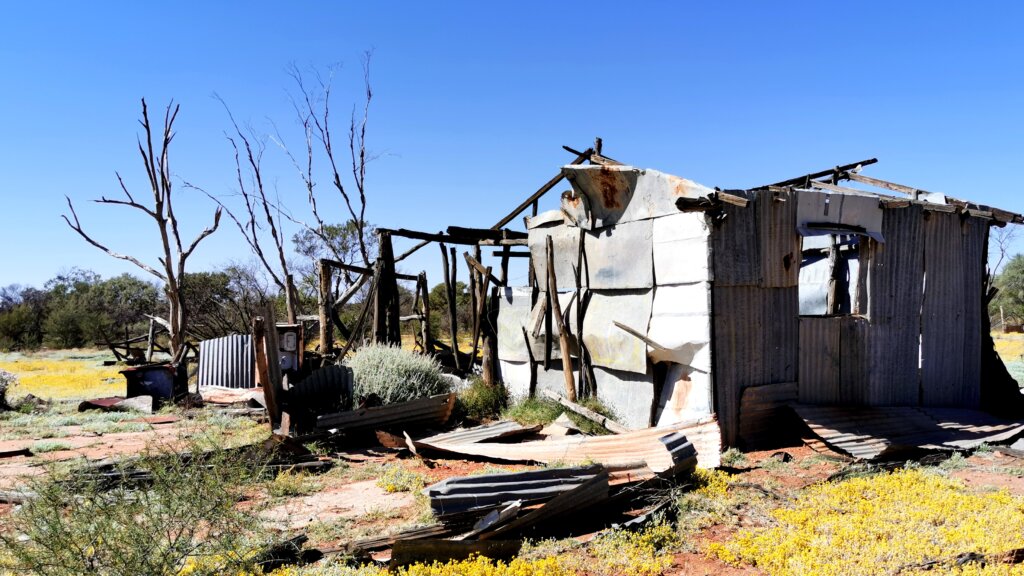
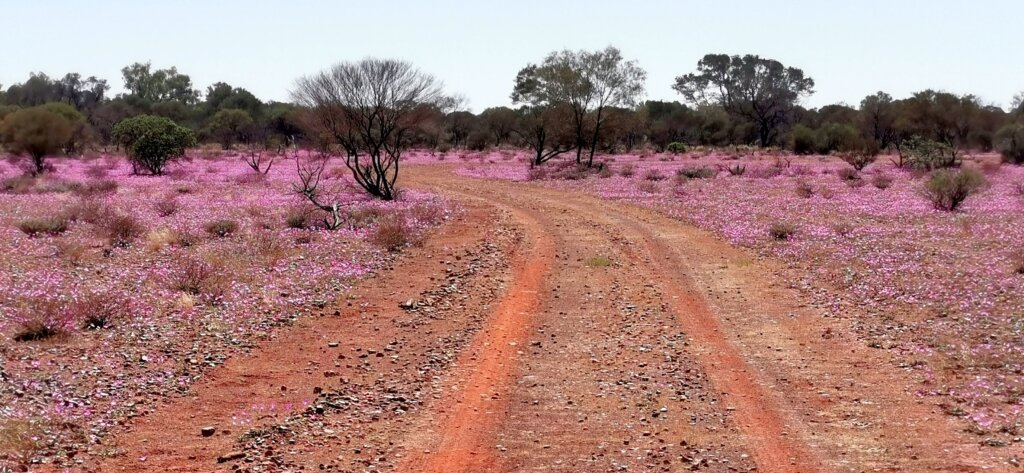
Part II to Jigalong coming soon!









My sister-in-law in Perth told me about the RPF and I have seen the movie. But you added to my impression of it. There is a section of the Kettle Valley Rail trail in British Columbia which goes across a plowed field full of furrows, but also waist-high grass, which makes it invisible. Of course, you can’t ride over them, but even walking the bike my GPS and camera fell off the bike because of the jarring and I had to backtrack to find them, which was not easy! The KVR has every possible type of surface, from mud to sand to deep coarse gravel. Fatties had not been invented when I did all 700kms of it!
Have you thought of carrying a Pack raft for those surprise lake crossings? They come in handy in BC!
Oh so wonderful to read your story – thank you! Have you seen many (any) cats in the desert? The Government is using cats as scapegoats again, claiming they are responsible for MILLIONS of extinctions of native animals each year. I have spent time in most of the deserts and in all that time saw only one feral cat – (saw lots and lots of camels and emus). I would be glad to know your experience. Wishing you the very best, Merike from Hervey Bay.
Hi Merike, Yes I have seen a couple of feral cats but this year I have just seen cat footprints, mainly on the Anne Beadell Highway.
A great insight into the Rabbit Proof Fence, Kate. I cannot understand the thinking that the fence would actually do that job, when all it took was one pair of rabbits to breach it. Your bike seems to be holding up well to all the adverse conditions you are facing. Thanks for the timing you are making to record the journey and share these beautiful photos.
Leanne